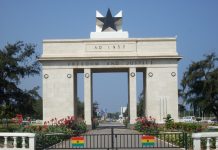Growth in Nigeria’s international passenger returned in 2017 according to a report released by IATA. This growth in Nigeria is attributed to the rise in oil prices. African airlines recorded a traffic rise of 7.5% compared to 2016. This means that capacity rose at less than half the rate of demand (3.6%) and load factor jumped 2.5 percentage points to 70.3% in 2017
IATA’s Director General and CEO, Alexandre de Juniac said, “2017 got off to a very strong start and largely stayed that way throughout the year, sustained by a broad-based pick-up in economic conditions. While the underlying economic outlook remains supportive in 2018, rising cost inputs, most notably fuel, suggest we are unlikely to see the same degree of demand stimulation from lower fares that occurred in the first part of 2017”
The International Air Transport Association (IATA) announced global passenger traffic results of which showed that for 2017 demand (revenue passenger kilometers or RPKs) for 2017 rose by 7.6% compared to 2016. This was well above the 10-year average annual growth rate of 5.5%. The rate of demand growth, on the other hand, slowed to 6.2% in December 2017, compared to December 2016, this largely was owing to less favorable comparisons to the even stronger growth trend seen in the year-ago period. Full-year 2017 capacity rose 6.3%, and load factor climbed 0.9 percentage point to a record calendar-year high of 81.4%.
Asia-Pacific carriers posted annual demand growth of 9.4%, compared to 2016, driven by robust regional economic expansion and an increase in route options for travelers. This was the first time since 1994 that Asia-Pacific led all the regions in annual growth rate. Capacity rose 7.9%, and load factor climbed 1.1 percentage points to 79.6%.
European carriers’ international traffic climbed 8.2% in 2017 compared to the previous year, underpinned by buoyant economic conditions in the region. Capacity rose 6.1% and load factor surged 1.6 percentage points to 84.4%, which was the highest for any region.
Middle East carriers’ traffic increased 6.6% last year. The region was the only one to see a slowdown in annual growth compared to 2016, and the region’s share of global traffic (9.5%) fell for the first time in 20 years. The market segment to/from North America was hit the hardest owing to factors including the temporary ban on large portable electronic devices in the aircraft cabin as well as the proposed US travel bans affecting some countries in the region. Capacity climbed 6.4% and load factor rose 0.1 percentage point to 74.7%.
North American airlines had their fastest demand growth since 2011, with full year traffic rising 4.8% compared to 2016. Capacity climbed 4.5%, and load factor edged up 0.3 percentage point to 81.7%. The comparatively robust economic backdrop supported outbound passenger demand. This was somewhat offset by a slowdown in inbound travel partly attributable to the new immigration and security restrictions put in place for travel to the US, as well as the extreme weather events that hit the US later in the year.
Latin American airlines’ traffic climbed 9.3% in 2017, the fastest rate since 2011. However, the upward trend weakened towards the end of the year, partly owing to disruption caused by the severe 2017 hurricane season that also hurt travel to the US. Capacity rose 8.0% and load factor increased 1.0 percentage point to 82.1%, second highest among the regions.
.













